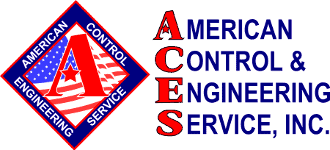THE MYSTERY
One of ACES’ customers closed their factory in Utah and moved all of the equipment to Kansas in order to set up a line manufacturing synthetic twine. The system included a PLC processor and six DC variable speed drives (VSDs) and their attendant DC motors ranging from 5 hp to 200 hp.
The customer asked the ACES Control Systems Investigator (CSI) to check the PLC processor to ensure the program hadn’t been lost during the move — but right away other mysteries presented themselves, like the 200 hp motor that wasn’t turning over.
THE CLUES
The CSI began his investigation with the dead 200 hp motor. To his surprise, he found parts were missing from the control board, and there were traces of wood splinters embedded in the circuit board on the DC VSD.
He checked the remaining five DC VSDs and observed that the 30 hp drive had a busted circuit board behind the cover. The remaining four drives looked okay but he couldn’t test them since the 200 hp and 30 hp VSDs had failed.
THE PERP
In this case there was a literal perpetrator with malicious intent: Evidently a saboteur had slammed a 2×4 repeatedly into the drive, leaving behind splinters. The DC VSD was destroyed — and was also obsolete, as it turned out. The manufacturer of the line recommended the CSI replace the drive with a new Yaskawa AC variable frequency drive (VFD). (Variable frequency drives allow variable and precise speed control of each motor, with a feedback system).
The circuit board for the 30 hp drive was another victim — the saboteur had apparently driven a round steel rod through the DC charging circuit, which allowed the unit to partially charge the DC bus but not enough to provide full power.
THE SOLUTION
The CSI ordered new AC VFDs to replace the vandalized DC VSDs. When replacing DC VSDs with AC VFDs, you must also change the DC motors to AC motors, so he also ordered AC versions of the 200 hp and 30 hp motors.
The CSI recovered and re-documented the PLC code, based on the wiring diagrams, and he installed the new parts and began startup testing.
SECOND PHASE OF TESTING
As so often happens in troubleshooting, getting part of the equipment up and running only revealed more components that weren’t working.
The CSI isolated the two vandalized drives and began troubleshooting the four remaining drives. Two units worked fine but two more victims — the third and fourth drives — began smoking while testing, and then blew the AC power line side fuses. It appeared that these two DC VSDs had failed from a rough ride across three states. So the CSI ordered two more Yaskawa AC VFDs and AC motors to go with them.
THE SOLUTION, PART TWO
The CSI installed the new drives and motors, and finally the two existing DC VSDs along their two DC motors, and the four new AC VFDs and their new AC motors were operating and online. The CSI also installed a new PLC, converted the controls from knobs and switches to a Wonderware HMI and monitoring software. He wrote new PLC code based on the new VFDs and the DeviceNet network used to control the motors.
Programming the combination of the existing DC VSDs along with the new AC VFDs was an interesting challenge, one which required four DeviceNet controllers and a DigiMax controller to interface between the PLCs and the drives.
DeviceNet allows the display of many helpful VFD parameters for maintenance and operations, decreasing troubleshooting time and increasing machine uptime.
The entire commissioning process took only six days, including several rounds of ordering new parts, automating the line and moving all motor speed control into the PLC, making the system recipe based. The customer now has a manufacturing line that will provide reliable service for many years to come.
Whether moving a manufacturing line or installing a new one, the commissioning process often involves multiple layers of expert troubleshooting to bring all hardware and software components online and playing nicely together. Thanks to ACES being a Yaskawa Authorized Service Provider, any Yaskawa VFDs installed and commissioned by ACES have double warranty.
